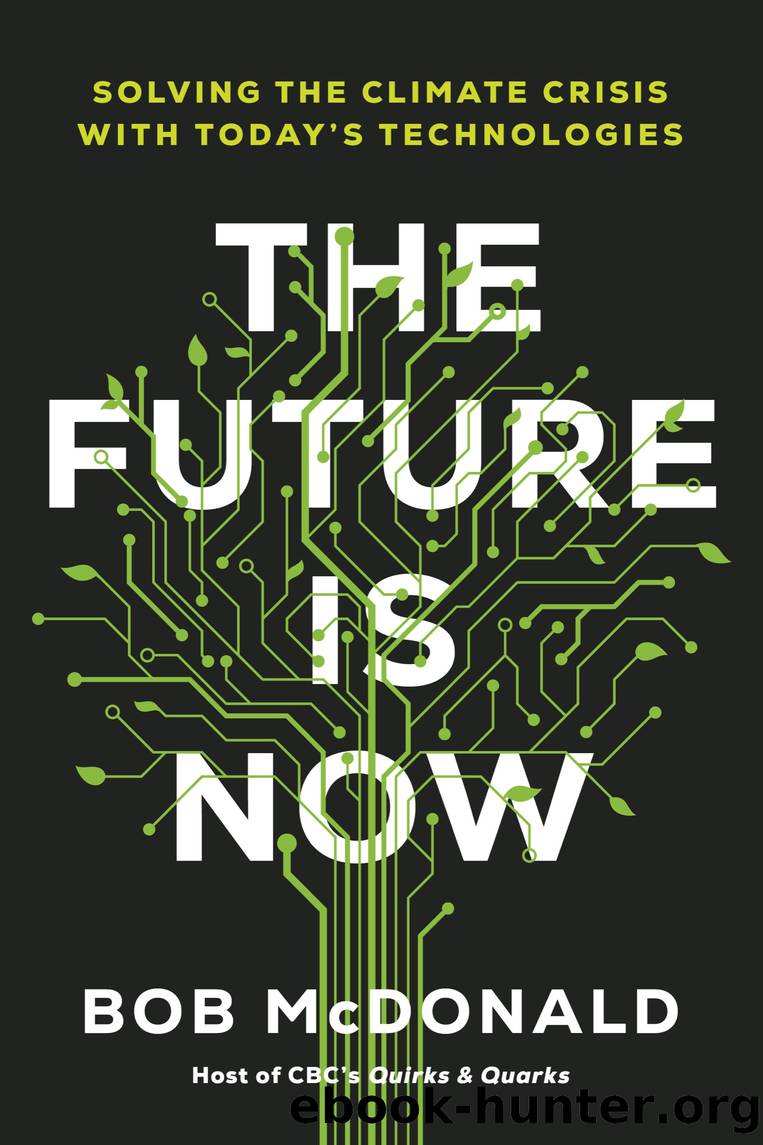The Future Is Now by Bob McDonald

Author:Bob McDonald [McDonald, Bob]
Language: eng
Format: epub
Publisher: Penguin Canada
Published: 2022-09-27T00:00:00+00:00
Uranium atom splitting, neutrons hitting other atoms and splitting in a chain reaction.
Image courtesy of Canadian Nuclear Association
Chapter Eight
Small Nuclear
Taking another look at nuclear energy by thinking small, modular reactors.
A journalist colleague at the CBC travelled to the North Pole aboard a Canadian icebreaker. After crunching through ice for days, they were surprised to be met at the Pole by a much larger, nuclear-powered Russian icebreaker. The Russian captain invited the Canadians over for dinner and a tour of their impressive vessel. The captain asked his Canadian counterpart how much diesel fuel he burned reaching the Pole. When the Canadian calculated the number of tons of fuel used by his ship, the Russian chuckled and replied, âI think we burned a few grams of uranium.â
Albert Einstein was well aware of the powerful forces held within the nucleus of an atom. Thatâs why he realized it would make a fearsome weapon if that energy was released all at once. He was concerned that Nazi Germany was on the way to developing a nuclear bomb, which prompted him to write a letter to US President Eisenhower to encourage the Americans to develop one first. Einstein was not directly involved in the Manhattan Project that did lead to the first atomic weapons, but after he saw how one single bomb could completely devastate a city, and later found out that the Germans were nowhere near developing the bomb, he regretted his decision to write the letter and spent his later years denouncing nuclear proliferation. Among the quotes attributed to him is this one from 1945: âThe release of atomic power has changed everything except our way of thinkingâ¦the solution to this problem lies in the heart of mankind. If only I had known, I should have become a watchmaker.â
It is unfortunate that the mushroom cloud and the terrible destruction it represents is often associated with nuclear power. True, it was first used in the atom bomb. But there is another more beneficial way to release the forces within the atom in a slower, controlled way to provide reliable emissions-free energy. And that is through a nuclear reactor.
Professor Einsteinâs famous formula, E = mC2, says that mass can be converted into energyâa lot of energy. The formula translates as, Energy (E) is equal to mass (m) multiplied by the speed of light (C) squared. The speed of light is a large number: 299,792,458 kilometres per second. So even a small amount of mass multiplied by that big number and squared delivers a huge amount of energy. That is the fundamental principle behind nuclear energy, where the forces that hold protons and neutrons together in the nucleus of an atom are broken, and enormous amounts of energy are released. Einstein considered mass simply as energy waiting to be set free.
To put that into perspective, an average adult has a mass of 62 kilograms. If the mass of a human body was turned entirely into energy, it would release 560 billion megajoules of energy, which is thousands of times more than the power of the first atomic bomb.
Download
This site does not store any files on its server. We only index and link to content provided by other sites. Please contact the content providers to delete copyright contents if any and email us, we'll remove relevant links or contents immediately.
Never by Ken Follett(2873)
Machine Learning at Scale with H2O by Gregory Keys | David Whiting(2267)
Fairy Tale by Stephen King(2059)
Will by Will Smith(2033)
Fantastic Beasts and Where to Find Them: The Original Screenplay by J. K. Rowling(2030)
The Storyteller by Dave Grohl(1656)
Cloud Cuckoo Land by Anthony Doerr(1428)
The Becoming by Nora Roberts(1324)
Friends, Lovers, and the Big Terrible Thing by Matthew Perry(1324)
New Morning Mercies: A Daily Gospel Devotional by Paul David Tripp(1305)
A Short History of War by Jeremy Black(1295)
HBR's 10 Must Reads 2022 by Harvard Business Review(1251)
Go Tell the Bees That I Am Gone by Diana Gabaldon(1231)
Can't Hurt Me: Master Your Mind and Defy the Odds - Clean Edition by David Goggins(1223)
The Complete Witcher by Andrzej Sapkowski(1219)
Cytonic by Brandon Sanderson(1216)
515945210 by Unknown(1205)
Fear No Evil by James Patterson(1106)
This Family Does It by Kevin Sellers(1079)
